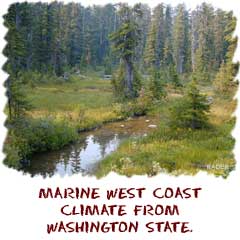 What is a climate? Is it weather? Is it the rain? Is it a hot day in August? Yes, yes and yes, but only in one place at a time. Climate is a general atmosphericcondition in a certain location near the surface of the Earth.
What is a climate? Is it weather? Is it the rain? Is it a hot day in August? Yes, yes and yes, but only in one place at a time. Climate is a general atmosphericcondition in a certain location near the surface of the Earth. Is the Aurora Borealis (Northern lights) a climate? No. It may be in the sky, but it’s not related to climate or weather.
Is climate the same as weather? No. Climate is a long-term concept. Climatologists study the weather patterns over decades and even centuries to understand the way a climate is supposed to behave. Weather is happening today or this week. If you live on the California coast, you live in a Mediterranean climate region. Climate will tell you to expect warm and dry summers, but it cannot tell you the years you will definitely have a drought.
Is there such a thing as a global climate? Yes... Kind of. The global climate is all of the climates of the planet added up. If the entire Earth was getting warmer you would have to say, "All of the global climates are increasing in temperature." You will probably hear a lot about global climate change. However, that global change will affect each climate type differently. There might be more or less rain, stronger or weaker storms, or other possible changes with an increase in temperature.
Climate Variety
There are many types of climates across the Earth. You live in one of them or on the border between two. Every year as the seasons change, your climate changes a bit. It might get warmer or colder. You might have more or less rain. You might have more or less sunlight that changes all of that other stuff.You will learn about many different climate types. These are only a few examples:
- Continental: Hot Summer
- Continental: Warm Summer
- Continental: Boreal
- Continental: Subarctic
- Subtropical: Dry Summer/Mediterranean
- Subtropical: Dry Winter
- Subtropical: Humid
- Subtropical: Marine West Coast
- Subtropical: Wet
- Tropical: Monsoon
- Tropical: Savannah/Grasslands
- Tropical: Wet
- Polar: Ice Caps
- Polar: Tundra
- Mountain Highlands
Biomes and climates are closely related. You are not likely to find forests in polar tundra regions because of the harsh and cold conditions for survival. Forests will also be rare in dry and arid desert regions due to high temperatures and lack of rainfall. An area such as the Midwest United States is generally classified as a temperate forest biome but includes both hot summer continental and humid subtropical climate regions.








0 comments:
Post a Comment